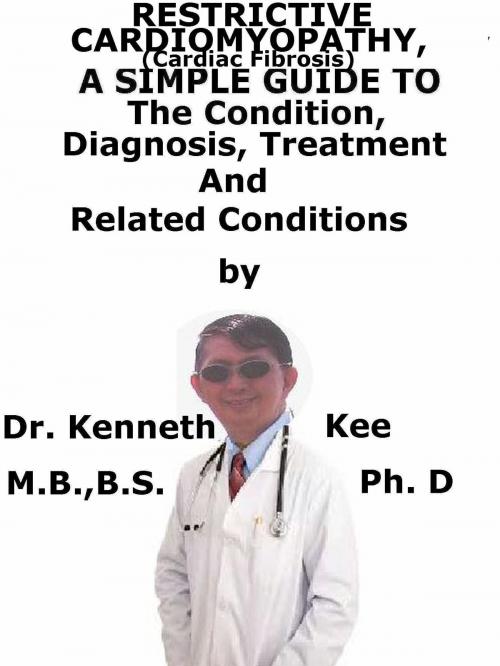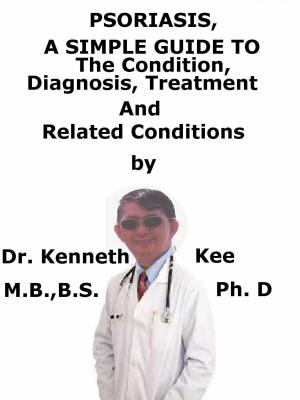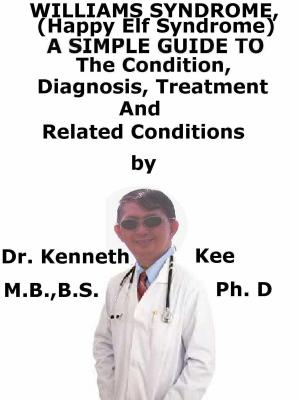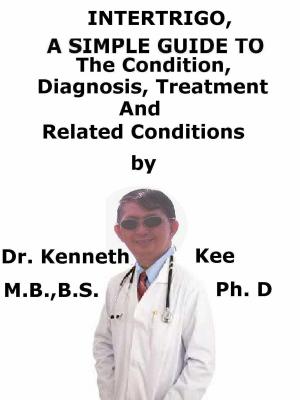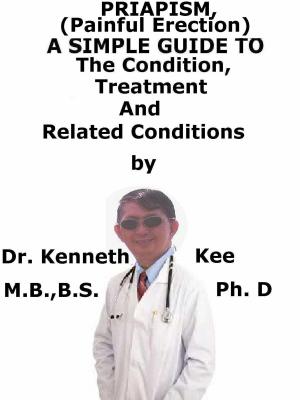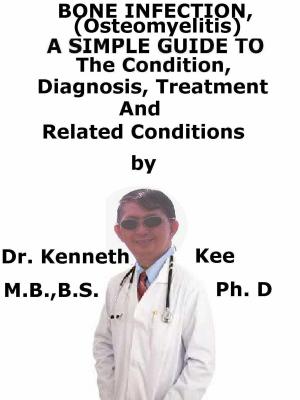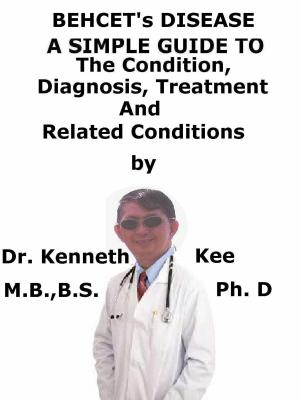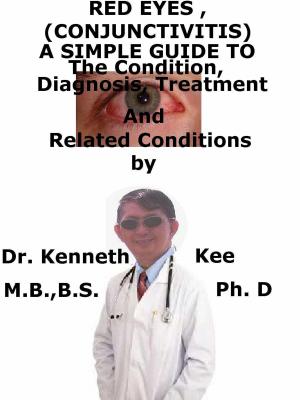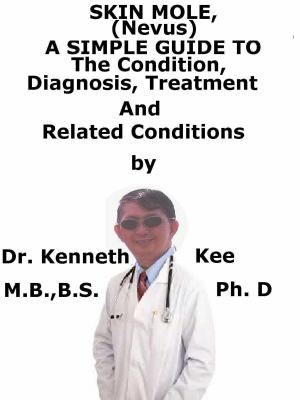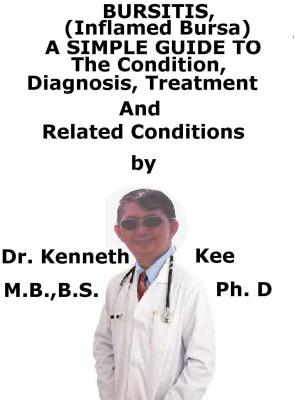Restrictive Cardiomyopathy (Cardiac Fibrosis), A Simple Guide To The Condition. Diagnosis, Treatment And Related Conditions
Nonfiction, Health & Well Being, Medical, Specialties, Internal Medicine, Cardiology, Health, Ailments & Diseases, Heart| Author: | Kenneth Kee | ISBN: | 9781370736713 |
| Publisher: | Kenneth Kee | Publication: | February 14, 2018 |
| Imprint: | Smashwords Edition | Language: | English |
| Author: | Kenneth Kee |
| ISBN: | 9781370736713 |
| Publisher: | Kenneth Kee |
| Publication: | February 14, 2018 |
| Imprint: | Smashwords Edition |
| Language: | English |
This book describes Restrictive Cardiomyopathy (Cardiac Fibrosis), Diagnosis and Treatment and Related Diseases
Cardiac fibrosis due to damage of the heart from myocardial infarction can affect the heart muscles as well causing the heart to stiffen up and have difficulty in pumping
This is also called Restrictive cardiomyopathy
Restrictive cardiomyopathy is a disorder in which the walls of the lower compartments of the heart (the ventricles) are atypically rigid and have not the flexibility to expand as the ventricles fill with blood.
The pumping or systolic action of the ventricle may be normal but the diastolic action (the ability of the heart to fill with blood) is not normal.
It is more difficult for the ventricles to fill with blood, and with time, the heart has the loss of the capability to pump blood properly leading to heart failure.
These alterations cause the heart to fill poorly (more frequent) or pump poorly (less frequent).
Sometimes, both problems are present.
Causes:
In restrictive cardiomyopathy, the heart muscle is normal in size or slightly swollen.
Most of the time, it also pumps normally.
While the main trouble is abnormal filling of the heart, the heart may not able to pump blood enough when the disease becomes worse.
The abnormal heart function can affect the lungs, liver, and other body systems.
Restrictive cardiomyopathy may affect either or both of the lower heart chambers (ventricles).
The most frequent causes are amyloidosis and scarring of the heart from an unknown cause.
1.Build-up of scar tissue (idiopathic is the most frequent cause)
2.Build-up of abnormal proteins (amyloidosis) in the heart muscle
3.Chemotherapy or chest exposure to radiation
4.Excess iron (hemochromatosis) in the heart
5.Other systemic diseases (sarcoidosis)
Symptoms
Many people with restrictive cardiomyopathy have no symptoms or only minor symptoms, and live a normal life.
Other people form symptoms, which become worse as heart function worsens.
Symptoms occur at any age and may be:
1.Shortness of breath (at first with exercise; but over time it occurs at rest)
Breathing problems that happen at night, with activity or when lying flat
2.Fatigue (feeling overly tired) and inability to exercise
3.Loss of appetite
4.Swelling of the legs and feet
5.Swelling of the abdomen
6.Weight gain
7.Nausea, bloating, (related to fluid retention)
8.Uneven or rapid pulse
A physical exam may show:
1.Enlarged (distended) or bulging neck veins
2.Enlarged liver
3.Lung crackles and abnormal or distant heart sounds in the chest heard through a stethoscope
4.Fluid backup into the hands and feet
5.Signs of heart failure
Diagnosis:
The volume of the heart may stay normal with restrictive cardiomyopathy.
Occasionally, restrictive cardiomyopathy may be confused with constrictive pericarditis, a disorder in which the layers of the pericardium become thickened, calcified and stiff.
Tests for restrictive cardiomyopathy are:
1.Chest CT scan
2.Chest x-ray
3.ECG (electrocardiogram)
4.Echocardiogram and Doppler study
5.MRI of the heart
6.Nuclear heart scans (MUGA, RNV)
7.Serum iron studies
8.Serum or urine protein tests
9.Cardiac catheterization and coronary angiography
Treatment
The disorder causing the cardiomyopathy is treated when it can be found.
The main aim of treatment is to control symptoms and improve quality of life.
Also, doctors may advise lifestyle changes and medicines to treat heart failure.
Diet - restrict the intake of salt
Exercise - exercise help
Medicines
1.Beta-blocker
2.ACE inhibitor.
Other medicines may be added.
1.Digoxin,
2.Diuretics
3.Aldosterone inhibitors
A heart transplant may help
TABLE OF CONTENT
Introduction
Chapter 1 Restrictive Cardiomyopathy (Cardiac Fibrosis)
Chapter 2 Causes
Chapter 3 Symptoms
Chapter 4 Diagnosis
Chapter 5 Treatment
Chapter 6 Prognosis
Chapter 7 Pulmonary Fibrosis
Chapter 8 Hepatic Fibrosis (Cirrhosis)
Epilogue
This book describes Restrictive Cardiomyopathy (Cardiac Fibrosis), Diagnosis and Treatment and Related Diseases
Cardiac fibrosis due to damage of the heart from myocardial infarction can affect the heart muscles as well causing the heart to stiffen up and have difficulty in pumping
This is also called Restrictive cardiomyopathy
Restrictive cardiomyopathy is a disorder in which the walls of the lower compartments of the heart (the ventricles) are atypically rigid and have not the flexibility to expand as the ventricles fill with blood.
The pumping or systolic action of the ventricle may be normal but the diastolic action (the ability of the heart to fill with blood) is not normal.
It is more difficult for the ventricles to fill with blood, and with time, the heart has the loss of the capability to pump blood properly leading to heart failure.
These alterations cause the heart to fill poorly (more frequent) or pump poorly (less frequent).
Sometimes, both problems are present.
Causes:
In restrictive cardiomyopathy, the heart muscle is normal in size or slightly swollen.
Most of the time, it also pumps normally.
While the main trouble is abnormal filling of the heart, the heart may not able to pump blood enough when the disease becomes worse.
The abnormal heart function can affect the lungs, liver, and other body systems.
Restrictive cardiomyopathy may affect either or both of the lower heart chambers (ventricles).
The most frequent causes are amyloidosis and scarring of the heart from an unknown cause.
1.Build-up of scar tissue (idiopathic is the most frequent cause)
2.Build-up of abnormal proteins (amyloidosis) in the heart muscle
3.Chemotherapy or chest exposure to radiation
4.Excess iron (hemochromatosis) in the heart
5.Other systemic diseases (sarcoidosis)
Symptoms
Many people with restrictive cardiomyopathy have no symptoms or only minor symptoms, and live a normal life.
Other people form symptoms, which become worse as heart function worsens.
Symptoms occur at any age and may be:
1.Shortness of breath (at first with exercise; but over time it occurs at rest)
Breathing problems that happen at night, with activity or when lying flat
2.Fatigue (feeling overly tired) and inability to exercise
3.Loss of appetite
4.Swelling of the legs and feet
5.Swelling of the abdomen
6.Weight gain
7.Nausea, bloating, (related to fluid retention)
8.Uneven or rapid pulse
A physical exam may show:
1.Enlarged (distended) or bulging neck veins
2.Enlarged liver
3.Lung crackles and abnormal or distant heart sounds in the chest heard through a stethoscope
4.Fluid backup into the hands and feet
5.Signs of heart failure
Diagnosis:
The volume of the heart may stay normal with restrictive cardiomyopathy.
Occasionally, restrictive cardiomyopathy may be confused with constrictive pericarditis, a disorder in which the layers of the pericardium become thickened, calcified and stiff.
Tests for restrictive cardiomyopathy are:
1.Chest CT scan
2.Chest x-ray
3.ECG (electrocardiogram)
4.Echocardiogram and Doppler study
5.MRI of the heart
6.Nuclear heart scans (MUGA, RNV)
7.Serum iron studies
8.Serum or urine protein tests
9.Cardiac catheterization and coronary angiography
Treatment
The disorder causing the cardiomyopathy is treated when it can be found.
The main aim of treatment is to control symptoms and improve quality of life.
Also, doctors may advise lifestyle changes and medicines to treat heart failure.
Diet - restrict the intake of salt
Exercise - exercise help
Medicines
1.Beta-blocker
2.ACE inhibitor.
Other medicines may be added.
1.Digoxin,
2.Diuretics
3.Aldosterone inhibitors
A heart transplant may help
TABLE OF CONTENT
Introduction
Chapter 1 Restrictive Cardiomyopathy (Cardiac Fibrosis)
Chapter 2 Causes
Chapter 3 Symptoms
Chapter 4 Diagnosis
Chapter 5 Treatment
Chapter 6 Prognosis
Chapter 7 Pulmonary Fibrosis
Chapter 8 Hepatic Fibrosis (Cirrhosis)
Epilogue
